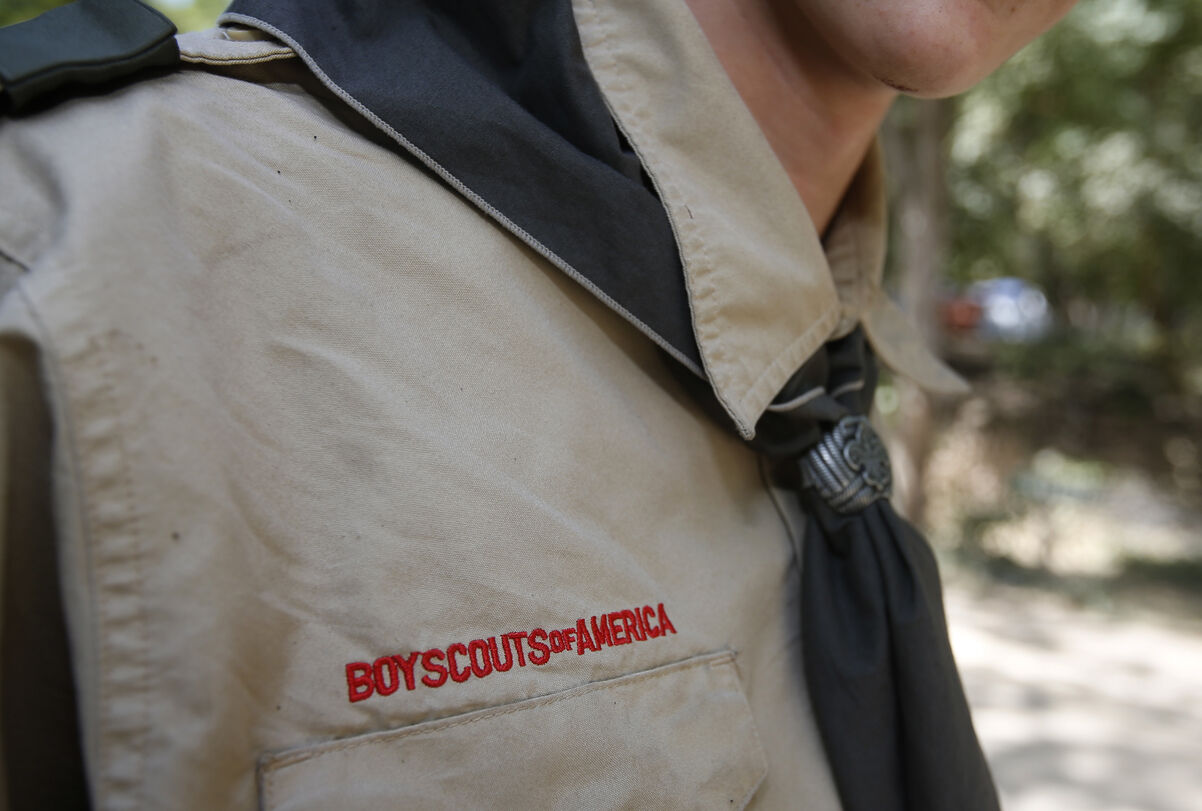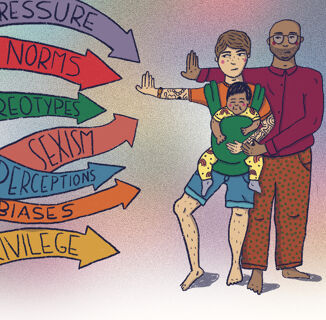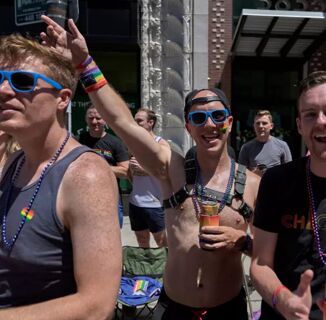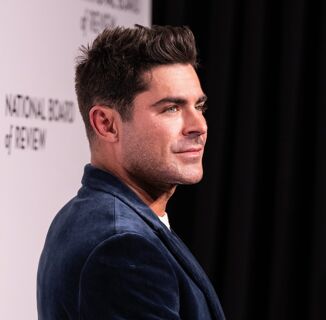Beads of sweat stream down my forehead as the scorching desert sun shines through the windshield of our windowless pick-up truck. Packed like sardines in between fishing poles and worn-out camping gear, two other young boys and I begrudgingly bounce around the backseat as we ride the uneven dirt road into the wilderness.
A pit of doom swells inside me as we’ve reached our final destination: Mataguay Scout Ranch.
While I wish to remember the activity of my childhood summers as carelessly running through sprinklers and playing video games undisturbed by the demands of school, the reality was much different. As a closeted genderqueer youth who was not only a member of the Church of Jesus Christ of Latter-day Saints but also forced to be a part of gender-segregated scouting, the close of the school year was inevitably inundated with dread. Summertime meant Boy Scout Camp, and Boy Scout Camp meant being forced to perform a narrow expression of boyhood that always felt extremely unnatural to me.
As an institution that has forever held firm to strict binary values around gender and youth development, the Mormon Church became the very first sponsor of Boy Scouts of America in 1913. The LDS Church has remained a strong partner ever since, with the Boy Scouts functioning as its unofficial youth leadership training organization.
That is, until yesterday.
After months of conversation, the Boy Scouts of America officially announced their name change to “Scouts BSA” last weekreleasing a short-term strategy to become more gender-inclusive by the year 2020. Immediately after this decision, the LDS Church publicized that it would be severing its century-long partnership, and instead redirect focus towards a new “global youth and leadership development program.” This decision by the Church comes after years of growing disagreement between the two institutions; most prominently BSA’s decision to re-enlist gay troop leaders in 2015, and the admittance of transgender boys two years later.
But let’s be clear about one thing: Despite the Mormon Church’s new shift towards “global youth development,” the announcement of this replacement program right after the expansion of Boy Scouts’ more gender-inclusive vision is far from a coincidence.
The Mormon Church’s separation from progressive policies such as this is inextricably connected to an ongoing legacy of steadfastness to deeply-rooted sexist and LGBTQ-exclusionary policies. Mormon culture is not yet ready to break open the gender binary. As a result, they are further distancing themselves from a wider revolution forcing us as a society to rethink gender as no longer binary but a spectrum.
All of these shifts in policy have resulted not from social trends, but through critical need to serve historically marginalized young people. For many queer boys and gender nonconforming youth like myself, the idea of gender-segregated activity devoid of the comfort of chosen friends is terrifying. Pulled right out of my social circle as a child (which almost entirely consisted of girls) and thrust into a Scout Camp filled with activities like shooting guns, swimming in ice-cold rivers, and playing pranks on younger Scouts, was far from an exciting summer vacation.
To me, and many other queer young boys less conditioned in all-boy spaces, it felt more like a toxic masculinity training camp.
Youth programming in the LDS Church in general also works hard to reinforce some of the oldest gender roles in the book. While boys attend high adventure camps, girls often spend their weekly youth nights learning about motherhood, baking, and homemaking skills. This division of traditionally masculine and feminine activities is a dangerous reinforcement of outdated and narrowly-defined gender roles that perpetuate cycles of sexism and misogyny.
At the age of 17, I was led to quit Boy Scouts altogetherright before I was about to complete my final Eagle Scout project. After years of internalizing immense self-hatred from being taught homosexuality as a sin, existing in a space that only reinforced those lessons was taking a major toll on my mental health and well-being. My decision followed the 2011 announcement that gay Scout leaders would be dismissed for allegedly promoting lifestyles that were too “perverse and inappropriate” for children.
Today, anti-LGBTQ advocates have moved from critiquing the inclusion of gay scout leaders, to the most recent inclusion of transgender youth in troops. In a Fox News special earlier this week, Tony Perkins expressed concern over new gender-inclusive Boy Scouts policies as an “elimination of manhood” that ultimately risks the safety and well-being of young boys. Perkins, President of the anti-LGBTQ hate group Family Research Council, told the network’s Todd Starnes last year that trans inclusion in scouting is “Exhibit A of the insatiable demands of those pushing this sexual anarchy.”
Prioritizing the feelings and comfort of cisgender, heterosexual people is irresponsible when research clearly shows that LGBTQ youth experience incredibly higher levels of victimization when it comes to homelessness, bullying, mental health, and suicideespecially when they hold multiple marginalized identities.
In GLSEN’s most recent National School Climate Survey, nearly 60 percent of LGBTQ young people reported feeling unsafe in school because of their sexual orientation, while the vast majority (85.2 percent) experienced verbal harassment. Further, over a third avoid gender-segregated spaces (e.g., bathrooms and locker rooms) because they felt either unsafe or uncomfortable. These feelings of exclusion are only exacerbated when attending extracurricular activities with worse levels of gender-segregation than seen within the school systemsuch as that historically practiced by Boy Scouts of America and the Mormon Church.
As a barely-out queer young person trapped within a homophobic Mormon culture and a conservative school district, moments like the dismissal of gay adults from Boy Scouts signaled to me that I was far from welcome in my community. When you tell a closeted queer child that you are protecting them by removing LGBTQ leaders from churches, extracurricular activities, and schools in fear of “perversity,” it tells them they should be ashamed and hide who they are. These youth require an affirming environment for them to grow and realize their full potential.
But fortunately for today’s generation of LGBTQ young people, times are changing. According to a 2015 survey, 56 percent of people between the ages 15-22 (also known as Generation Z) know someone who uses gender neutral pronouns. Meanwhile, just over half identify as queer or on the bisexual spectrum, and 70 percent support gender neutral bathrooms. Most critically, 38 percent of the rising generation strongly agreed that gender doesn’t define a person as much as it used to.
As social norms and the role of gender in society continue to evolve, the only way that traditional institutions like the Mormon Church will remain relevant to rising generations of youth is if they embrace these waves of change and enact policies to match.
Whether they’ve come out yet or not, trans and gender nonconforming young people sit in Mormon congregations every Sunday and attend youth group every week. They hear what others in the pews say about people like them, and they are waiting for adults and church leaders to give them the space to be their true selves. The Churchand all youth-serving organizationshas the responsibility to acknowledge and affirm these kinds of children, especially the vast number of those who express beyond the strict confines of the gender binary.
For me, it was only through supportive educators and friends outside of my Mormon community that I was finally able to muster up the courage to come out as queer during my Sophomore year of high school. To have been supported by my religious community known for being restrictive would have meant the world.
As an adult advocate for LGBTQ youth today, it is critical that we do better by queer young people. This is not only because they deserve better, but because they are the future. Whether or not institutions like the Mormon Church (or what becomes of its new Boy Scouts organization) keep up with drastically shifting social norms around gender, a youth-led revolution is on the horizon. Trans and gender nonconforming young people are here to stay.
I, for one, will be following their lead. Later, Saints!
Photo by George Frey/Getty Images
Help make sure LGBTQ+ stories are being told...
We can't rely on mainstream media to tell our stories. That's why we don't lock our articles behind a paywall. Will you support our mission with a contribution today?
Cancel anytime · Proudly LGBTQ+ owned and operated
Read More in Culture
The Latest on INTO
Subscribe to get a twice-weekly dose of queer news, updates, and insights from the INTO team.
in Your Inbox















